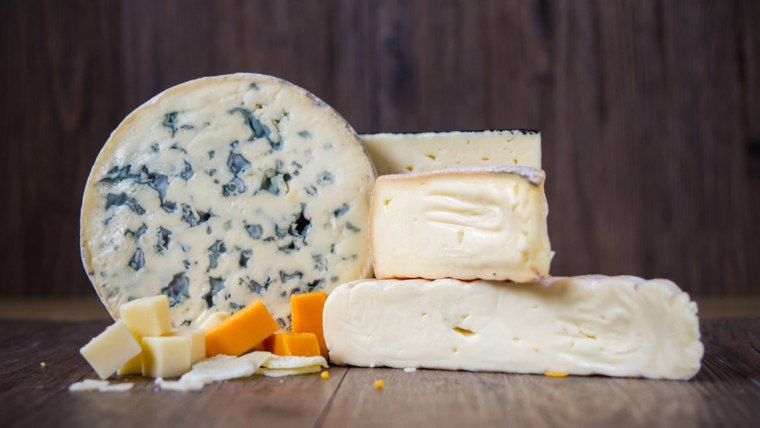For many people, cheese is one of the tastiest foods around. But just because a food tastes great — and for some, hard to resist — does this create a biological cue to the brain similar to how addiction pathways work?

While there have been a lot of headlines screaming yes, the science says no: there are no addictive biochemicals in cheese causing your brain to make you want to eat more of it.
The mistaken biochemical claim stems from connecting cheese to a group of compounds called “casomorphins”. Casomorphins are small protein fragments formed during the digestion of milk proteins (cheese is made from milk). Some of these small peptides, called casomorphins, are quite similar to a other protein fragments known to activate addiction pathways in the brain.
The mistake is simple to explain. To have any addictive impact on the brain, casomorphins would have to:
- be absorbed from the intestines into the blood
- travel to the brain; cross from the blood into the brain
- and then activate the brain areas linked to addictive behavior
Humans have several robust metabolic barriers that prevent the casomorphins in the intestines from making this journey to the brain. So, after eating cheese, casomorphins don’t make it to the brain, and don’t stimulate the brain to induce cheese addiction.
The most recent confusion about this comes from the discussion in the media and blogs about a recent paper in an online journal PLoS One that simply asked study subjects which foods they found hard to resist (a type of “food addiction” survey). Near the top of the list were anticipated highly-palatable foods like ice cream, pizza, cookies, French fries, chips, and cake.
Cheese (not as part of a pizza) also ranked in the middle of the list of foods, below the highly palatable processed group, but above foods like eggs, steak, and broccoli. A key feature is that no one actually selected or ate any foods; people were only asked about food. And other studies document that what people say they eat, is not actually what they eat. So, it’s difficult to interpret what the actual findings mean.
And no connection was even made in this paper between cheese and food addiction — the investigators were interested in “processed foods”.
Regardless of the interpretation of the study results, the biology remains the same: there’s no direct casomorphin-brain link driving eating behavior. And, more generally, while people may love cheese, it remains highly unlikely, based on current science, that it’s because of an impact on the addiction centers of the brain.
So if you enjoy cheese as part of a balanced diet, you’ll be getting a boost of protein and calcium as well as good taste. Choose reduced fat (or if desired non-fat) cheese to keep your daily saturated fat intake in check.
A serving of cheese is about 1 ounce (the size of your thumb) — not how much you cut of the huge chunk.
If you’re a cheese lover and find it hard to limit your serving size or frequency of eating, try swapping it out for another dairy product, or other nutrient-rich food. You can control your own eating behavior, especially knowing this is a behavioral, not biological issue.
As with all foods in nature, moderation is key. If you choose, cheese can be a part of a healthy and balanced diet. It’s all part of mindful eating, which requires daily practice.